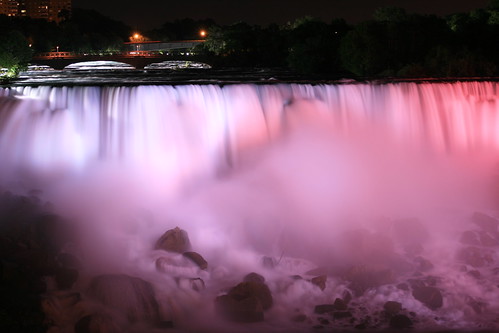malluboy is a great artist & member on www.flickr.com
Sunday, December 02, 2007
Saturday, November 24, 2007
day off to Erawan Waterfall_2007-11-18_006.jpg
day off to Erawan Waterfall_2007-11-18_006.jpg
went to Erawan Waterfall on sunday, there are a total of 7 levels of waterfalls in Erawan, and with my backpack and gears, i was tired as soon as i hit the third one >.<"
Uploaded by DuNnO - The Kit Lens Baby , a great artist & member on www.flickr.com
Thursday, November 15, 2007
Tuesday, November 13, 2007
Friday, November 09, 2007
Friday, November 02, 2007
Monday, October 29, 2007
Wednesday, October 24, 2007
Tuesday, October 23, 2007
Wednesday, October 17, 2007
Wednesday, September 12, 2007
Niagara
When you think about 2030, there are no more winter in this world. Then the beautiful scene of this Niagara fall would no longer be seen.
So the health of all of us would be a great issue for lagging of water. We need to act together to stop the Global Warming now.
This great shot by Ming Chai, a great artist & member on www.flickr.com
Friday, July 06, 2007
U.S. Water Recycling and Reuse Systems Markets
http://www.researchandmarkets.com/reports/c60020
A word of caution is one need to ensured that these reused water must remove all the toxins & pollutants before being used as well.
Otherwise, it may cause some after disease & illness for mankind.
This Frost & Sullivan research service titled U.S. Water Recycling
and Reuse Systems Market provides the drivers, restraints, and market
trends that are impacting this market. In this research, Frost &
Sullivan's expert analysts thoroughly examine the following
technologies: activated carbon systems, media filtration systems, and
membrane systems.
Population Increase and Freshwater Demand Drive the Water Recycling and Reuse Market
Water
recycling and reuse is gaining popularity in the United States due to
the growing demand for water in industries and municipal applications
like agricultural irrigation, lawn watering, and other non-potable
applications. Increase in population and the growing economy are
further putting enormous strain on the existing freshwater resources.
Water reuse and recycling, which helps augment existing water resources
to cope with the demand for freshwater, provides a solution for
sustainable water management. There are several technologies, which are
currently available for treating wastewater for reuse or recycling.
Membrane bioreactor (MBR) is a popular technology that is on a high
growth path, as it combines activated sludge treatment with membrane
filtration.
Stringent federal wastewater discharge regulations
are also driving water recycling and reuse in the United States. The
absence of federal standards for water reuse has forced the states to
establish their own standards. California and Florida are leading the
nation in recycling and reusing water. Some of the other southern
states such as Georgia, Texas, Arizona, and Nevada also have water
reuse programs. "The opportunities for water reuse are tremendous and
the states are realizing its potential benefits," notes the analyst of
this research service. "The rising cost of water, which is a direct
effect of the current water shortage, coupled with tighter
environmental regulations, offers good market opportunities for
existing and emerging participants."
Consumers Negative Perception Barring Wastewater Reuse Must Be Alleviated By Heightening Awareness
Although
wastewater is being treated to a level that is fit for drinking,
consumers, especially public, do not have a complete understanding of
treatment techniques for reusing wastewater, and find these toilet to
tap projects unacceptable. "Whether the water is used for edible food
crops, aquifer recharge or purposes such as toilet flushing or
gardening, issues such as colour and turbidity of water and health
concerns are giving them reasons to doubt the safety and usability of
treated wastewater," observes the analyst. "Hence, there is a strong
negative perception on using treated wastewater for domestic
applications such as lawn irrigation, car washing, or indirect potable
reuse among the consumers."
State water authorities and
manufacturers feel that educating the end users by highlighting the
benefits of reusing water would help change this perception. They
prefer addressing public health concerns and other issues through
organizations such as Water Environment Federation (WEF), which have a
much broader access and can disseminate information quickly.
Read More:
http://www.researchandmarkets.com/reports/c60020
Powered by ScribeFire.
Monday, July 02, 2007
Untitled
Can you see how precious is the water??
This great shot by strelitzia, a great artist & member on www.flickr.com
Friday, May 04, 2007
Bottled water trumps milk, nears beer
This is a interesting report!!
It show that American need to understand the health issue & stability of Oxygen in bottled water & other repated issue.
@@@@@@@@@@@@@@@@@@@@@@@@@@@@@@@@@@@@@@@@@@@@@@@@@@@@W
Bottled water trumps milk, nears beer
By DUANE D. STANFORD
The Atlanta Journal-Constitution
Published on: 05/04/07
Twenty years ago, people scoffed at the notion that highfalutin bottled water made by companies like Perrier and Crystal Springs would ever catch on with the masses. Why would people pay for something they could get at the kitchen sink for next to nothing, the doubters asked?
Boy were they wrong. For the first time ever, Americans on average drank more bottled water in 2006 than milk, according to an industry newsletter that tracks U.S. beverage sales.
And Americans drank nearly as much bottled water as beer.
If the trend continues, Americans could be drinking more bottled water than tap water within a few years.
John Sicher, publisher of industry newsletter Beverage Digest, which tabulated the consumption figures, said portability and health are the key reasons for bottled water's popularity.
"Tap water is in trouble," he quipped.
Beverage Digest's figures showed average per capita consumption of bottled water grew from 11 to 21 gallons between 1996 and 2006.
Consumption of milk dropped from 22.7 to 19.5 gallons over the 10-year span, while beer consumption was steady at 21.8.
Soft drink consumption dropped from 52 to 50.9 gallons, according to the figures.














